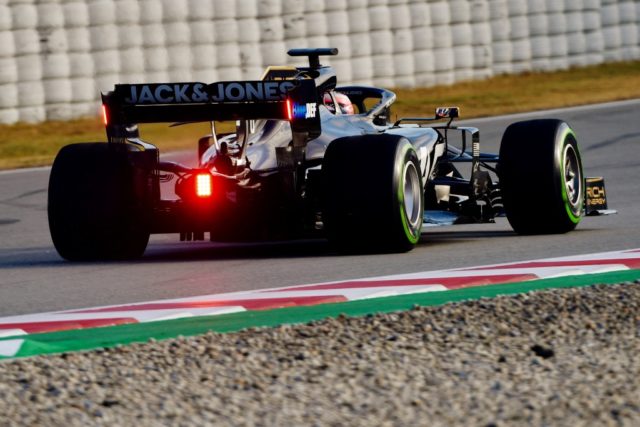At the beginning of any racing season, teams have great expectations. After all, they all have the same amount of wins and are equal in the championship standings. But for Haas, perhaps no expectations are greater than they are in this 70th Formula One season.
As the American team embarks on just its fourth year competing in the FIA Formula One World Championship, it does so coming off its best season. Haas ended 2018 with a strong fifth-place finish in the constructors’ standings, outpacing McLaren (sixth), Racing Point (seventh), Alfa Romeo (eighth), Toro Rosso (ninth) and Williams (10th). The 93 points Haas earned were nearly double the 47 points earned during its sophomore campaign.
Haas drivers Kevin Magnussen and Romain Grosjean have proven to be quite adept at navigating the track’s layout, which is comprised of public roads encircling Albert Park Lake, a man-made body of water just south of Melbourne’s central business district. The roads were rebuilt prior to Formula One’s debut at the track in 1996, but because the surface only sees racecars about once a year, grip is hard to come by, especially in the initial practice sessions. It’s a street circuit that behaves more like a natural road course. It’s quick too, with Mercedes driver Lewis Hamilton setting a track-record time in qualifying last year with a blistering lap of 1:21.164 to take the pole.
Team principal Guenther Steiner previews the first round of the championship.
Haas tested at Circuit de Barcelona – Catalunya for eight days over a 12-day span. How did it go and how did it prepare you for Australia?
“The test, in general, was good. We had a few small problems, which we can address before Australia. Obviously, we test to find these problems and, hopefully, we’ve found them all. Performance-wise, it’s too early to say how we’ll go in Australia. We have to wait until we go into qualifying on Saturday.”
Did testing provide a glimpse of where Haas stacks up to the competition, or will it only be known after a handful of races?
“We’ll know after qualifying where we are. The long-term performance for 2019, we’ll only find that out after we’ve started a few races.”
How would you describe this year’s car in relation to last year’s car? Is it an evolution or, with the new rules package, is it a drastically different racecar?
“It’s a mix of the two. It’s an evolution, you try to integrate the changes in the regulations as best as you can. But you’re not completely redesigning the whole car. The parts that need to change, they’re changed, and then you adjust the rest of the car to it.”
8️⃣7️⃣1️⃣ laps set in pre-season testing by the #VF19. @RGrosjean 4️⃣0️⃣7️⃣ ???@KevinMagnussen 4️⃣0️⃣3️⃣ ???@PiFitti 6️⃣1️⃣ ???#HaasF1 #F1 #RichEnergy pic.twitter.com/HpUeBAFiJR
— Haas F1 Team (@HaasF1Team) March 4, 2019
The new rules package essentially consists of simplified front and rear wings and less intricate, repositioned bargeboards – all of which were done to minimize a car’s aero wake and promote passing. After two weeks of testing, do you feel we’ll see more passing this season and, specifically, more passing in the Australian Grand Prix?
“The aim of the regulation change was to make passing easier, but the proof is in the pudding. We’ll only really see after three or four races how it works out. Australia, in general, is a very difficult track to pass at – probably one of the most difficult ones. If it doesn’t work there, we shouldn’t jump to the conclusion that it will not work for the whole year. We need to see if it works or not, and you only really find these things out in race situations.”
Compared to 2018’s schedule, everything began a week earlier this year, with both winter testing and the Australian Grand Prix coming one week sooner. How did this impact your car build and your overall preparation for the season-opening race?
“As long as we’re aware of the changes and we agree to them – which we obviously did, otherwise they wouldn’t have happened – you adjust pretty well. You simply plan a week earlier. It maybe sounds too simple of an answer, but that’s what it is. You know about it, you adjust, and you do what you have to do.”
Car preparation is, obviously, a major component of the season opener, but what about human preparation? What has the team done to prepare itself for the attention to detail necessary to compete in Formula One, particularly in regard to pit stops?
“We obviously haven’t forgotten last year’s pit stops in Australia, which went wrong. This year we’ve put a lot of emphasis on arriving there prepared. We brought a 2018 car to our car build in Italy so we could train every day and work on pit stops. We did the same in Barcelona, as the current car is not always available for pit stop practice when you test. Every day the whole crew practiced around 10 to 12 pit stops a day.”

































